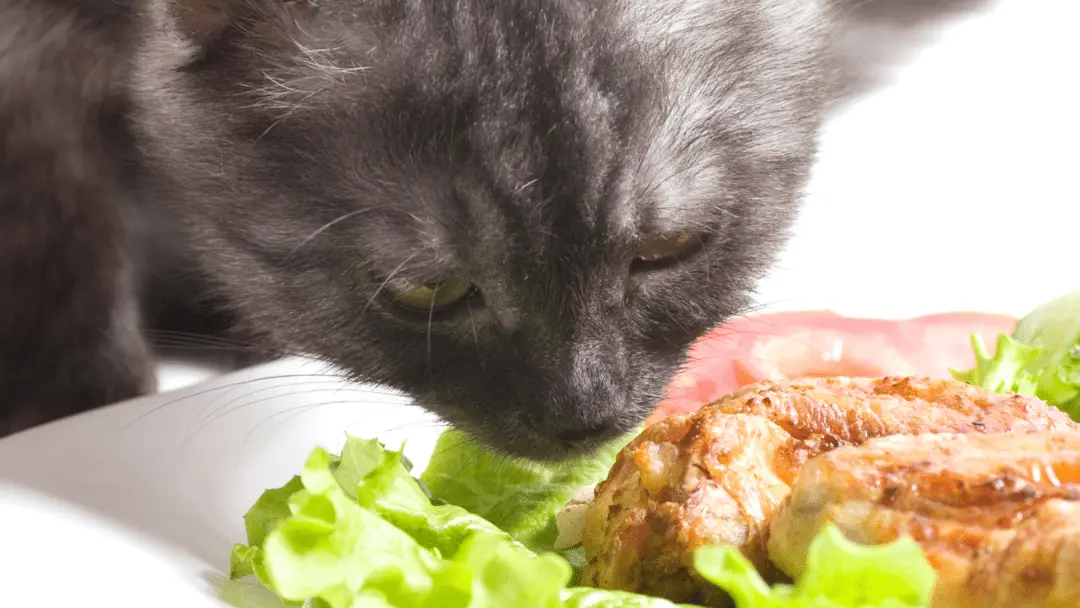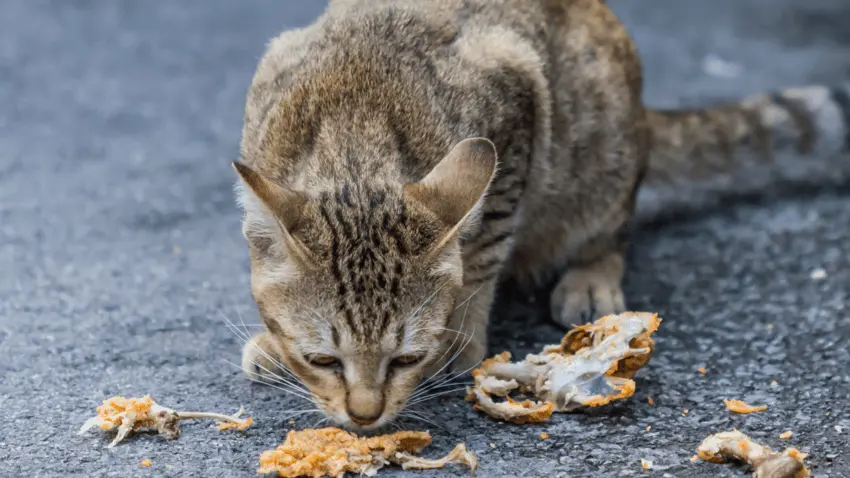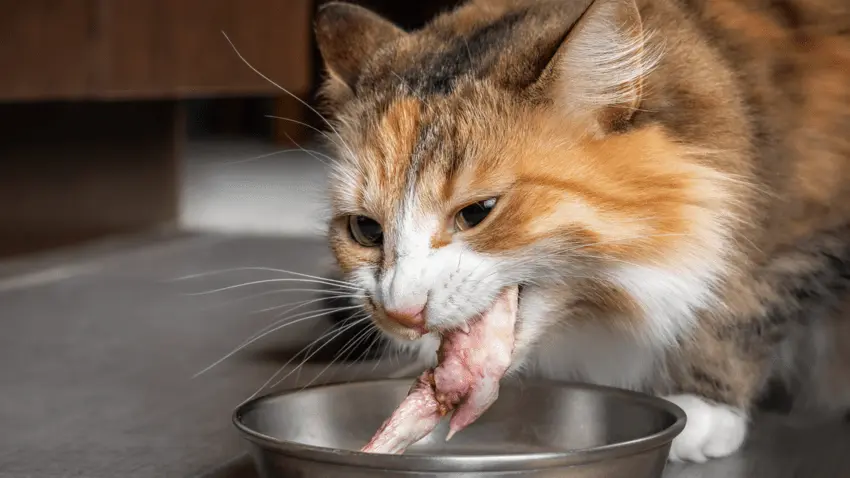Can Cats Eat Chicken Skin? What Are The Nutritional Benefits?
Chicken is an excellent source of protein that many cats love. But the question is, can cats eat chicken skin regularly?
A small helping of cooked chicken skin won’t hurt, but it’s different if you plan to give it to your pet every day. Also, how you prepare the chicken skin is crucial to whether it’s suitable for a cat or not.

In this post, I discuss this topic more as a long-time cat owner. I’ve shared points I learned from the vet and being a furparent to my tabby Watson.
Is chicken skin good for cats?
Cats are obligate carnivores, so chicken skin is totally great for them in moderation.
To know whether chicken skin is good for your pet, you have to understand what’s in it. Below, I did a quick rundown to help you understand:
Chicken skin is a good protein source.
As with its meat, chicken skin is a good source of protein for your feline. In every 3.5 ounces of chicken skin, there are 20 grams of protein.
But before you think it’s a great idea to feed your cat with chicken skin all the time, let me stop you there.
Chicken skin is also high in fat (discussed further below), which can be a big problem if you feed it on a daily basis.
Chicken is packed with vitamins and minerals
Aside from protein, chicken skin is also packed with vitamin A, which helps with your cat’s eyesight. Also, it has vitamin B12 necessary for nerve health, and phosphorus needed for strong bones.
Chicken skin also contains small traces of calcium, potassium, and iron. It also supplies your cat with zinc and selenium to fight fatigue.
Chicken skin has unsaturated fat.
Another thing you should know is that chicken skin is high in unsaturated fat. This is also known as ‘good fat’, which supports heart health and aids in lowering blood cholesterol levels.
However, just because it’s called ‘good fat’ doesn’t mean you’ll make chicken skin a daily part of your cat’s diet.
Unsaturated fat is still fat. This means that excessive consumption can easily lead to weight gain, which will defeat the purpose of supplementing good fat in the first place.
Chicken skin is high in calories.
A single ounce of chicken skin, which is one to two strips, contains 90 calories. In perspective, a 10 lb. cat should only consume not more than 350 calories a day or 240 calories on the lower side.
If you feed chicken skin to your cat regularly, it will gain excess weight in just a few weeks. Take note that your cat will also eat its regular meal, which easily adds up to the surplus calories.
Overall, a small amount of chicken skin from time to time won’t hurt your cat. In fact, it could help maintain its coat and overall health.
The key here is moderation and focusing on a more wholesome diet for your pet.
Never feed raw chicken skin to your cat!

Raw chicken skin can be contaminated with Salmonella and Listeria, which will wreak havoc on your pet’s tummy. Take note that this digestive infection can be life-threatening due to intense diarrhea and vomiting that could lead to dehydration.
To prevent this from happening, you should cook the chicken skin before giving it to your pet. It’s because high temperatures can kill contaminants and bacteria that could cause digestive problems in your cat.
How do you make chicken skin for cat food?
The best way to prepare chicken skin is either boiling or baking it in the oven. Whichever way you choose, you should never add spices since many are toxic to felines.
Never add garlic, onion, salt, oil, or spices to the chicken skin. The natural poultry flavor is more than appetizing for your pet.
You can mix this on your cat’s kibble or wet food for an added dose of protein. Aside from that, you can give a small amount as a treat once in a while.
Also, never get your cat used to eating fried chicken skin. While it’s also cooked, the oily nature of this food increases the bad fat content of the chicken skin, which is bad for your cat.
If you’re planning to feed chicken skin to your cat, make sure that it’s old enough to chew kibble. Never feed this to kittens who are still nursing on their mother cat.
What part of the chicken can cats eat?
Wings, breasts, and drumsticks are the best chicken cuts for pet animals. These are protein-rich without too much fat content.
But whatever part you choose, make sure that you cook it well to neutralize contaminants. Also, you should only prepare fresh meat, not old ones, regardless of whether it’s for your cat or your own consumption.
Also, avoid canned chicken since it often contains preservatives and other chemicals.
On the other hand, some supporters of the raw diet may promote feeding cats raw chicken. They believe that a raw diet aligns with a cat’s natural diet in the wild.
However, a raw diet requires extensive preparation. You must ensure that the raw meat is contaminant-free and freshly butchered.
Overall, this is both an expensive and somewhat risky choice for domesticated pets. In the end, boiling your cat’s chicken serving will save you and your pet from much trouble.
Can cats have cooked chicken fat?

Chicken fat is safe for cats, but only in small amounts. It’s a good source of linoleic acid that promotes coat health, as well as unsaturated fat that can cause weight gain.
Overall, a small cooked serving won’t hurt. But just like chicken skin, chicken fat shouldn’t be considered a part of their regular diet.
Can I feed chicken thighs to my cat?
Yes! Chicken thighs are a great part since it’s rich in protein, vitamins, and minerals.
You can add boiled or baked chicken thighs to your cat’s meal once in a while. But then again, it shouldn’t be used as an absolute meal replacement.
Conclusion
Chicken skin is rich in protein and nutrients, but it should only be given to your cat in small amounts. Also, it must be cooked properly to kill any potential contaminants that could make your pet sick.
If you doubt whether chicken skin is safe for your sick cat, you shouldn’t hesitate to consult the vet.

